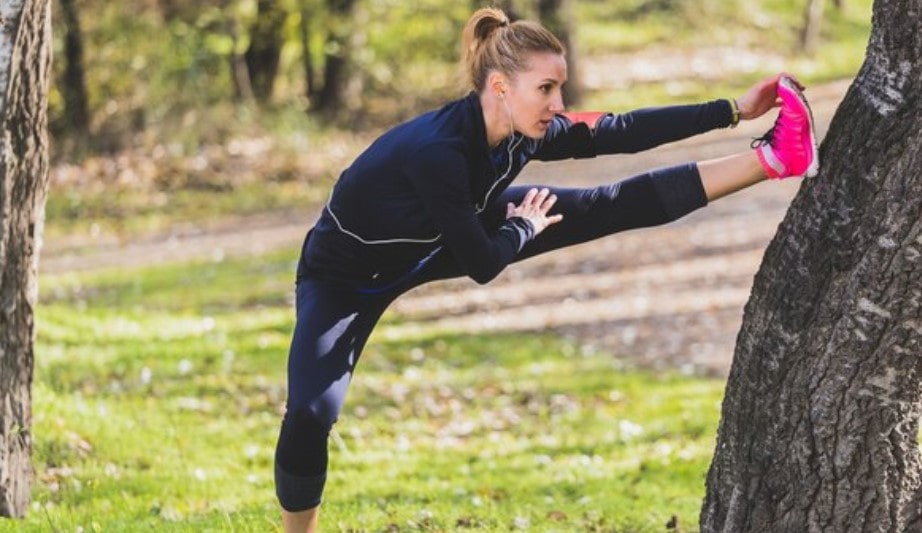Running is a fantastic way to improve your fitness level, boost your mood, and enjoy the great outdoors. Whether you’re a complete beginner or someone who used to run but took a break, this article will guide you through the process of starting your running routine. We’ll cover everything from setting goals and creating a plan to essential equipment, proper warm-up techniques, and staying motivated along the way. So, lace up your shoes, and let’s dive into the world of running!
Running is a versatile and accessible form of exercise that offers numerous health benefits. It can help you lose weight, strengthen your muscles, improve cardiovascular health, and enhance mental clarity. However, starting a running routine can be intimidating for beginners. With the right approach and knowledge, you can make your journey to running a successful and enjoyable one.
Why Start Running?

Before diving into the logistics of starting a running routine, it’s essential to understand the benefits that running can provide. Running is a full-body workout that engages multiple muscle groups, burns calories, and increases cardiovascular endurance. It also releases endorphins, known as the “feel-good” hormones, which can elevate your mood and reduce stress. Moreover, running allows you to explore your surroundings, connect with nature, and enjoy the fresh air.
Setting Goals and Creating a Plan
To begin your running journey, it’s crucial to set clear goals and create a plan that suits your fitness level. Start by defining what you want to achieve through running. It could be completing a specific race, losing weight, improving overall fitness, or simply incorporating regular physical activity into your routine. Once you have your goals in mind, break them down into smaller, achievable milestones. This will help you stay motivated and track your progress effectively.

Essential Equipment for Running
Running requires minimal equipment, but investing in a few key items can significantly enhance your comfort and safety. The most important piece of equipment is a good pair of running shoes that provide proper support and cushioning.
Other essentials include moisture-wicking clothing, a well-fitting sports bra for women, and socks designed for running. If you plan to run outdoors, consider investing in reflective gear and a lightweight jacket for varying weather conditions.
Warming Up and Stretching
Before every run, it’s crucial to warm up your muscles and perform dynamic stretches to prepare your body for the activity. Warming up increases blood flow, loosens up your joints, and reduces the risk of injury. Dynamic stretches, such as leg swings, walking lunges, and high knees, help improve flexibility and mobility. It’s important to note that static stretching, holding a stretch for an extended period, is more effective after running to improve flexibility and cool down your muscles.

Starting Slowly: Couch to 5K Program
One of the most popular programs for beginners is the Couch to 5K (C25K) program. This program gradually introduces running through a structured training plan that alternates between walking and running intervals.
It allows your body to adapt to the demands of running gradually, reducing the risk of injury and helping you build endurance. C25K programs are available in the form of mobile apps, podcasts, or downloadable schedules that guide you through each training session.
Building Endurance and Stamina
As you progress in your running journey, it’s important to focus on building endurance and stamina. This involves gradually increasing the duration and intensity of your runs. Implementing techniques such as interval training, where you alternate between periods of high-intensity running and recovery, can help improve your cardiovascular fitness. Additionally, incorporating longer runs and hill workouts into your routine will challenge your muscles and improve your overall running performance.

Running Form and Technique
Having proper running form and technique is crucial for efficiency and injury prevention. When running, maintain an upright posture with a slight lean forward, relax your shoulders, and engage your core. Land midfoot, with your foot striking the ground directly under your body, and push off from your toes.
Aim for a smooth, flowing stride and avoid overstriding or bouncing. Working with a running coach or joining a running group can provide valuable feedback and guidance on improving your form.
Incorporating Strength Training
Strength training plays a vital role in enhancing your running performance and reducing the risk of injuries. It helps build overall body strength, stability, and muscular endurance. Focus on exercises that target your lower body, such as squats, lunges, and calf raises, to improve leg strength.
Additionally, incorporate exercises that engage your core, back, and upper body for balanced strength. Aim for two to three strength training sessions per week, allowing adequate rest between sessions.

Avoiding Common Running Injuries
Running can put stress on your muscles and joints, making it important to take precautions to avoid common running injuries. Some preventive measures include gradually increasing mileage, wearing proper footwear, listening to your body’s signals, and incorporating rest days into your training schedule. It’s also beneficial to cross-train with low-impact activities like swimming or cycling to give your body a break from the impact of running. If you experience persistent pain or discomfort, consult a healthcare professional.
Hydration and Nutrition for Runners
Proper hydration and nutrition are key factors in supporting your running performance and recovery. Stay hydrated by drinking water throughout the day and sipping on fluids during your runs. For longer runs, consider carrying a hydration pack or belt.
When it comes to nutrition, focus on consuming a balanced diet that includes lean proteins, complex carbohydrates, and healthy fats. Fuel your body with nutrient-dense foods, such as fruits, vegetables, whole grains, and lean meats, to support energy levels and muscle recovery.

Overcoming Mental Challenges
Running can be physically demanding, but it also presents mental challenges. It’s common to experience self-doubt, lack of motivation, or mental fatigue during your running journey. To overcome these challenges, practice positive self-talk, set realistic expectations, and break your runs into smaller, manageable segments.
Find ways to stay mentally engaged, such as listening to uplifting music, podcasts, or audiobooks. Celebrate your achievements and remind yourself of the reasons why you started running in the first place.
Staying Motivated and Consistent
Maintaining motivation and consistency is crucial for long-term success in running. Set small, achievable goals along the way and reward yourself when you achieve them. Find a running buddy or join a local running group to stay accountable and a supportive community can provide the motivation and encouragement you need to stay consistent with your running routine.
Additionally, vary your routes and explore new trails or parks to keep your runs interesting and enjoyable. Remember that consistency is key, even on days when you may not feel like running. Stick to your schedule and trust the process.
Tracking Progress and Celebrating Milestones
Tracking your progress is an effective way to stay motivated and see how far you’ve come. Use a running app or a dedicated fitness tracker to monitor your distance, pace, and other metrics. This allows you to track your improvement over time and set new goals. Celebrate your milestones, whether it’s completing your first mile, reaching a new personal record, or finishing a race. Acknowledge your achievements and use them as fuel to keep pushing forward.
Conclusion
Embarking on a running journey as a beginner can be both exciting and challenging. By following the tips and tricks outlined in this article, you’ll be well-prepared to start your running routine with confidence. Remember to set realistic goals, start slowly with a structured program, prioritize proper form and technique, and take care of your body through strength training, hydration, and nutrition.
Overcoming mental challenges and staying motivated will be key to your success. So, lace up your running shoes, embrace the journey, and enjoy the many physical and mental benefits that running has to offer.
FAQs
1. How often should I run as a beginner? As a beginner, aim to run three to four times per week, with rest days in between. This allows your body to adapt and recover.
2. Is it normal to feel sore after running? Yes, it’s common to experience muscle soreness, especially when starting a new running routine or increasing intensity. Make sure to warm up, cool down, and stretch properly to reduce soreness.
3. Can I run if I have joint pain or a previous injury? If you have joint pain or a previous injury, it’s best to consult with a healthcare professional before starting a running routine. They can provide guidance based on your specific situation.
4. How long does it take to see progress in running? Progress varies from person to person, but you can expect to notice improvements in your endurance and stamina within a few weeks of consistent training.
5. What should I do if I feel unmotivated to run? If you’re feeling unmotivated, try finding a running buddy or joining a local running group. Setting small goals, rewarding yourself, and varying your routes can also help reignite your motivation.








